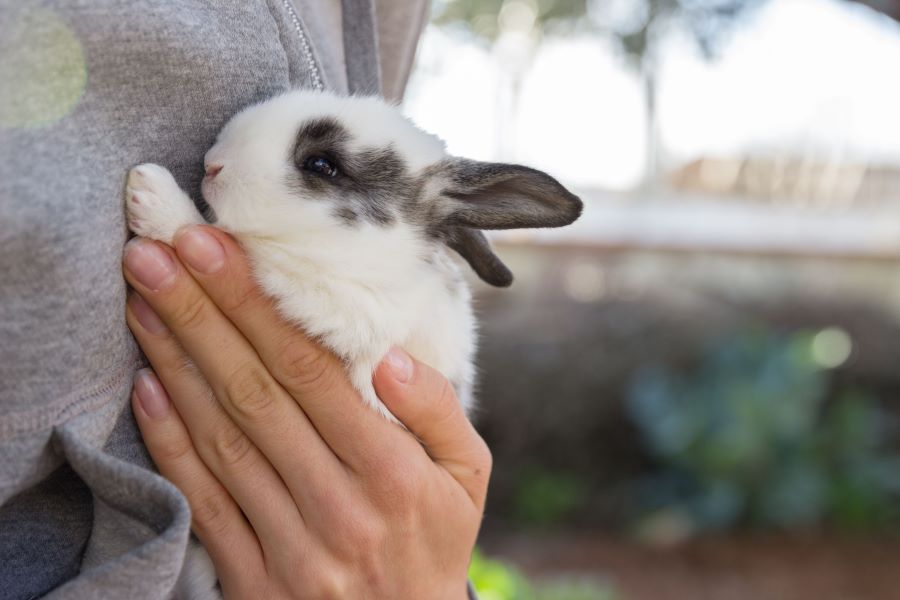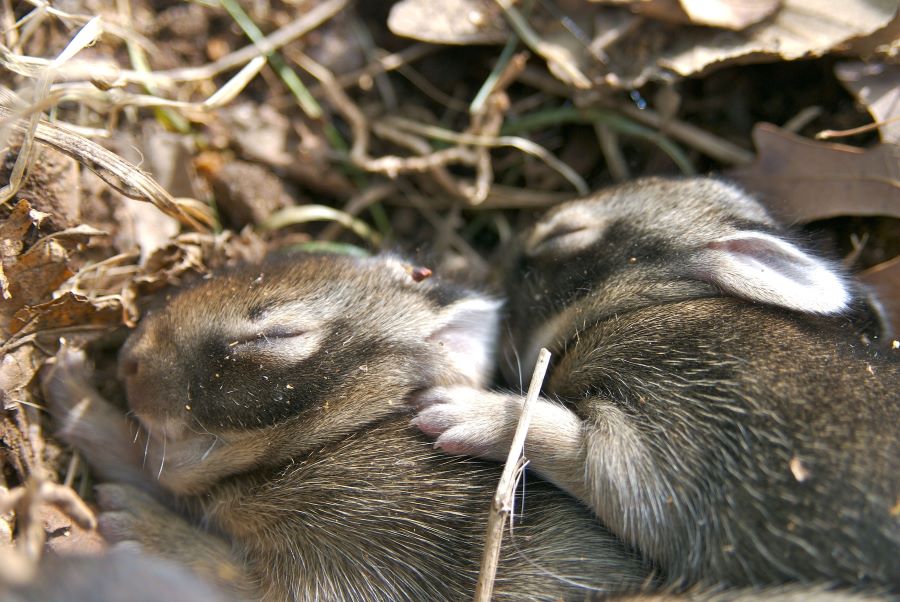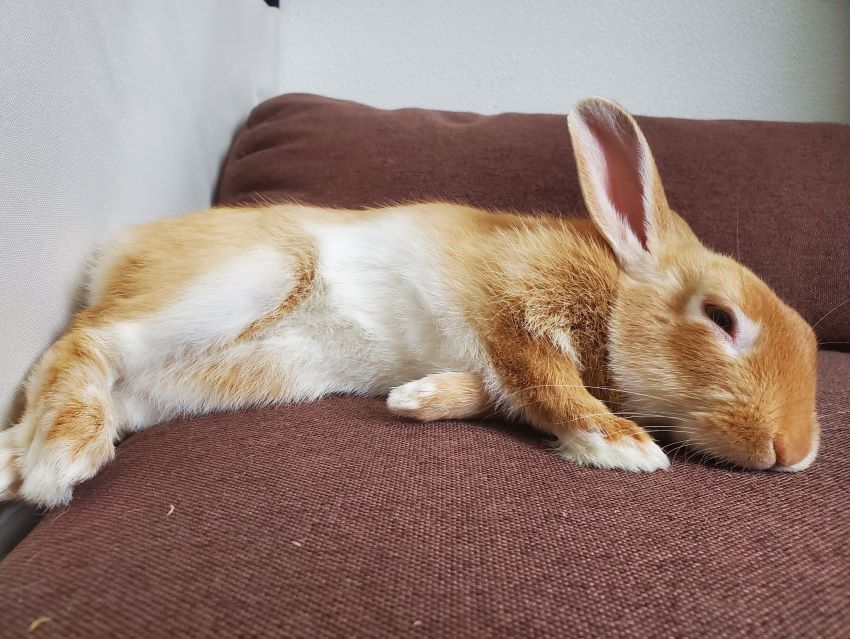Some of the posts on Mercury Pets contain affiliate links to products. That means if you click on that link and then make a purchase, we receive a percentage of the sale. We only recommend products we’ve used and support, and there’s no additional cost to you — the money goes right back into making this site the best it can be! Thanks for reading.

So, do rabbits mate for life? Well, they do, but not with the same rabbit. You see, the entire mating thing for a rabbit is a bit more complicated than people think.
Rabbits mate and breed throughout their lives, from the age of 12 weeks to their deaths. With your pet it is advisable not to let them breed until they are 6 months old. They are polygamous, and will mate with a variety of other rabbits throughout their lives, often including close family members.
Rabbits are awfully cute, with their fuzzy warm fur, cute button noses and long twitchy ears. They really are the picture of cuddliness, and because of this many fairy stories and myths surround them.
They are often shown paired together, snuggling and cute during Easter, or on picture cards for example. The reality is quite different when considering rabbits for pairing and mating.
Actually, they are less likely to stick one mate, in fact rabbits seem to enjoy variety when it comes to mating.
Rabbit Breeding Habits
Most people are aware that rabbits are prolific breeders. They can start mating as young as 12 weeks old, and it is common, if left to their own devices, that a male rabbit can impregnate his mother as early as this.
Alternatively, a father rabbit can impregnate his own daughter.
Although they are fertile from very early on, it is advisable to wait until your male and female rabbits are at least 6 months old before mating or breeding them.
Rabbits mate and breed during their entire lifespan, and can start this as early as just a few weeks old. They will breed with their own siblings, their parents and cousins, so it is important to note this if you are keeping rabbits in a domestic setting.
Also, one other thing to think about if you are considering breeding rabbits. Never ever allow sibling rabbits to breed or to use for breeding purposes or any other reason. [Source]
The Complex Family Picture For Rabbits
Rabbits need to be in good health and strength in order to take care of their kits in a satisfactory manner. If this is not the case, they in effect become very bad parents. Age and maturity is an important factor when allowing rabbits to mate, whether in captivity or in the wild. If necessary, you might have to separate them to discourage this.
More importantly, it is imperative that rabbits do not breed with their siblings, although they are certainly inclined to do so, even when as young as 8 – 12 weeks. The reason being is that their genes will not be of sound structure when inbred. This can cause issues with the rabbit later on in life.
Oddly, it is fine to allow a mother and son rabbit to breed when mature, or a father and a daughter, but not a sibling. This sounds odd to most people, but is very acceptable in the rabbit breeding world.
How Is Rabbit Sibling Breeding Paused In The Wild?
Domestic settings can offer rabbits a healthier procreative life, and will make sure that the kits are healthy if you do not allow inbred rabbits. One might wonder how this is regulated in the wild, and for the most part, it is as rabbits operate on smell, and if they can smell their familiar brother or sister, they will move on.
This is particularly easy in the social life of a wild rabbit, as they have plenty of choice. However, domestic rabbits would have to be monitored, as there could be insufficient partners. It is advised that if you do place a brother and sister together, they will have to be neutered and spayed to stop this from occurring. This is important, whether you are breeding rabbits or not, for their own health.
Rabbits Are Highly Social
Rabbits are very social and do enjoy the company of others, a lot. In the wild, this is not so noticeable, but there is a huge social network underground called a warren, which is a group of intricate burrows dug out by different rabbits together. This can increase the chances of coming across potential mates. [Source]
Rabbits become very attuned to their surroundings. They learn where the food supply is better in their area and where water can be obtained. This is why it is never a good idea to move a rabbit from his or her area and relocate them to a different spot if they are in the wild. They would struggle to survive, keep warm, and find food and water.
The warren is where rabbits go to keep warm, meet their friends and, of course, prospective suitors in order to mate. It is also where they keep their kits and hide them away from predators.
This instinct to spend time with other rabbits in this type of social setting is natural to a rabbit. This almost constant mixing with others leads to that possibility of having multiple mates.
It is also important to note not all males will like all females, and all females like all males. There are times when a female rabbit takes a dislike to a male, for example, and refuses to mate at all. Well, with that particular rabbit, but generally they are easy going enough to consider most mates a possible mating match.

Companionship Is Very Important To Rabbits
It’s very important to note that domestic rabbits do enjoy a companion, and this can be for life, but it is more of a friendship thing due to their situation if they are in captivity or in a domestic situation.
So often you will observe two rabbits cuddling and snuggling together as though best buddies, and they really are. They will watch each other, play, clean each other and cuddle, and they need not be paired as male and female. This is a real true friendship story.
As cute as this sounds, it can only happen if both are neutered and or spayed. Two males, two females and mixed-sex can live happily ever after if they are sterilized first, so that there is no frustration on either side.
In this way, the myths are true. They do enjoy socializing, and they do enjoy sharing their lives and space with other rabbits. In fact, a lone rabbit is a very sad and lonely rabbit indeed.
This is especially true if left outside to his or her own devices. It is better to at least purchase rabbits in pairs for this reason, and if you can keep them indoors to enjoy further socializing even better. Remember, mating doesn’t always have to involve producing baby rabbits.
So, Do Rabbits Breed For Life? – Summing Up
Let’s recap on breeding and mating for one second.
Rabbits should not be allowed to breed until at least 6 months old, as discussed earlier. Once they start mating, they can mate several times a year, and each litter can be from 6 to 16 kittens. Once they are pregnant, the gestation period is around a month.
Most females will produce around four litters a year on average, and considering some can live up to five years in a domestic setting that is a lot of baby rabbits! Female rabbits do start to slow down at around four years, and this of course depends on the condition of the rabbit, and if she is in the wild or not.
Generally, this is an average figure of when a female will start losing interest in her male counterpart and his desire to procreate. He will then turn his attention to younger rabbits in order to copulate. Females will then turn on males, and this is when characteristic honking or stamping of feet can be seen when she is not happy he is around, or if she is placed in his breeding pen.
For breeding, the female is always placed in the male pen, as males are very territorial and will not relax and be comfortable enough to mate in a strange pen or area. Most males will continue to breed until they deteriorate from old age or are not healthy enough to do so anymore.
In a way, this all sounds quite complicated, but it’s really not.
Rabbits are social, they love the company of another rabbit constantly, if it is not to copulate. Having said that, they are virile and ready to copulate most of their lives, so much so that siblings must be separated by breeders. Remember, in the wild, rabbits have more choices for mates and will avoid their siblings. If breeders wish to, they can breed a mother and son rabbit, or a father and daughter rabbit, but only when the kit is aged 6 months or older.
If they do not, they risk losing a litter to either the babies being abandoned, or eaten by a fearful mother who is not ready to take care of young kittens yet.
Looking after rabbits can be very rewarding, particularly if they are happy, and having a companion with them is a big plus for any rabbit, but do ensure that they are both spayed or neutered in order to avoid sexual issues.



